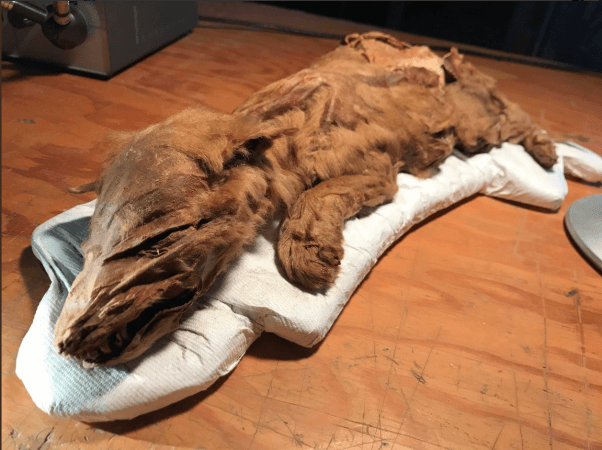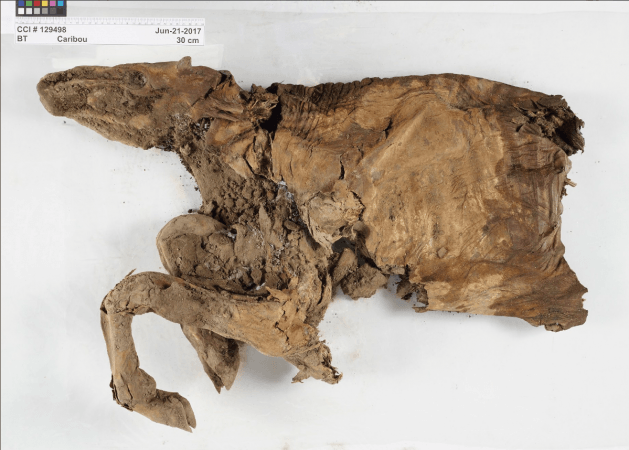
Two ice-age mammals- a wolf pup and a caribou, were found almost perfectly preserved in a Canadian gold mine. The remains, discovered with the animals' fur, flesh and bones intact, have garnered a great deal of scientific interest, says the Government of Yukon, Canada.
According to palaeontologist Grant Zazula who is working on the samples, this could be the world's only known ice age wolf mummy ever found.
Both specimen have been radiocarbon-dated to be over 50,000 years old and finding preserved animals from that point of time in this state is extremely rare, said the release. The person who found the carcass thought it was probably a dog. The Yukon Paleontology Program for research and analysis is reported to have started studying the samples.
The Caribou remains, though not as well preserved as the pup, still has the Torso, head, and front limbs intact, notes a report by ZMEscience.
"These are ashes that are found in the permafrost from volcanoes in Alaska that erupted during the ice age," Zazula explained. "We think this is some of the oldest mummified soft tissue in the entire world."

The time period where these animals lived also played a key role in the way it was preserved, say experts. The skin and fur are so well-preserved because the cold climate created the perfect conditions to preserve the animals. A drier and more arid climate would help to preserve skin and fur, and this typically happens when the climate gets colder said Jan Zalasiewicz, a palaeobiologist at the University of Leicester.
"The trick here is finding a means of freeze-drying the carcass in these arid conditions and burying it ... you need to find a way to dry it and put it in the freezer very quickly."
Canada during this time was under thick layers of ice, but the Yukon region escaped glacial cover, notes the report. It is likely that wolves, mammoths, and caribou all lived here alongside dangerous predators like the Scimitar cats—think Diego from Ice Age.
The animals have been carefully stored and will be sent to labs to have their DNA and bones analysed, notes the report. Scientists will soon be able to gain better insight into not only the animals but also their surroundings and environment in which they lived.
Ice age mummies found in Klondike gold fields on display in Dawson City. Tr'ondëk Hwëch'in @ChRobertaJoseph, @Premier_Silver and Minister of Tourism and Culture @jeaniedendys will be in Dawson today to unveil the mummified remains. Learn more: https://t.co/ma9aX3cjv6 pic.twitter.com/97QLi7kEHg
— Government of Yukon (@yukongov) September 13, 2018
















